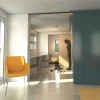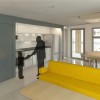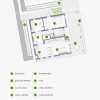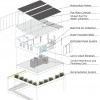2011 Solar Decathlon: The Ohio State University
Video
Returning to the Solar Decathlon for the second consecutive competition, The Ohio State University team is building on the lessons learned from a Top 10 finish in the 2009 competition with a focus on efficient urban living. Designed as an urban infill house that could fit anywhere in Columbus, Ohio, enCORE is a 900 sq. ft., two-bedroom house that layers programmatic living spaces in an effort to recapture the spatial efficiencies of older homes. Abbie Faust, a Master's candidate in Architecture, explains, “We really wanted to emphasize how people can live in a smaller footprint. Our house condenses the family space by not losing the function, but emphasizing the core, of our house.”
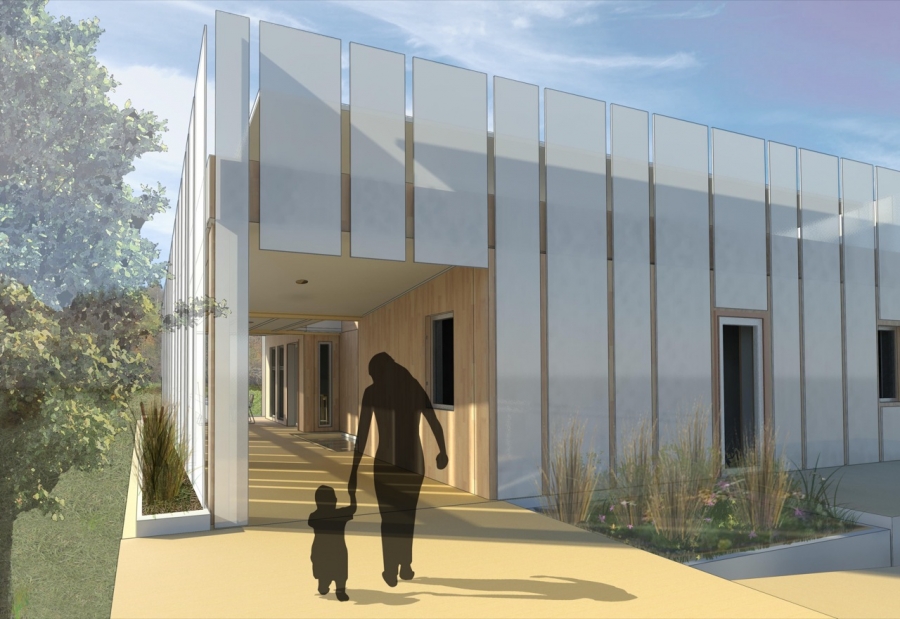
The monolithic form of the house understates the complex integration of the mechanical systems and the architectural aesthetic. The architectural and engineering design teams efficiently packed the bathroom, kitchen, and mechanical equipment into a centralized core. The placement of the core allows the south-facing living space, adjacent to the kitchen, to flow around the core into the more private home office and sleeping areas.
“We want people to know we are back, but we also want them to know, 'Look at the core when you walk into the house,' because this is what makes the space around it work so well.” Abbie Faust, The Ohio State University
The exterior of the house utilizes a rain screen cladding system comprised of translucent polycarbonate panels and cedar siding. A gracious overhang on the south façade shades large windows that flood the main living space with natural light. At the front of the house there is a sheltered porch that is open at both ends to provide cross-ventilation. A bioremediation system to treat gray water doubles as an herb garden and adds natural vegetation to the site.


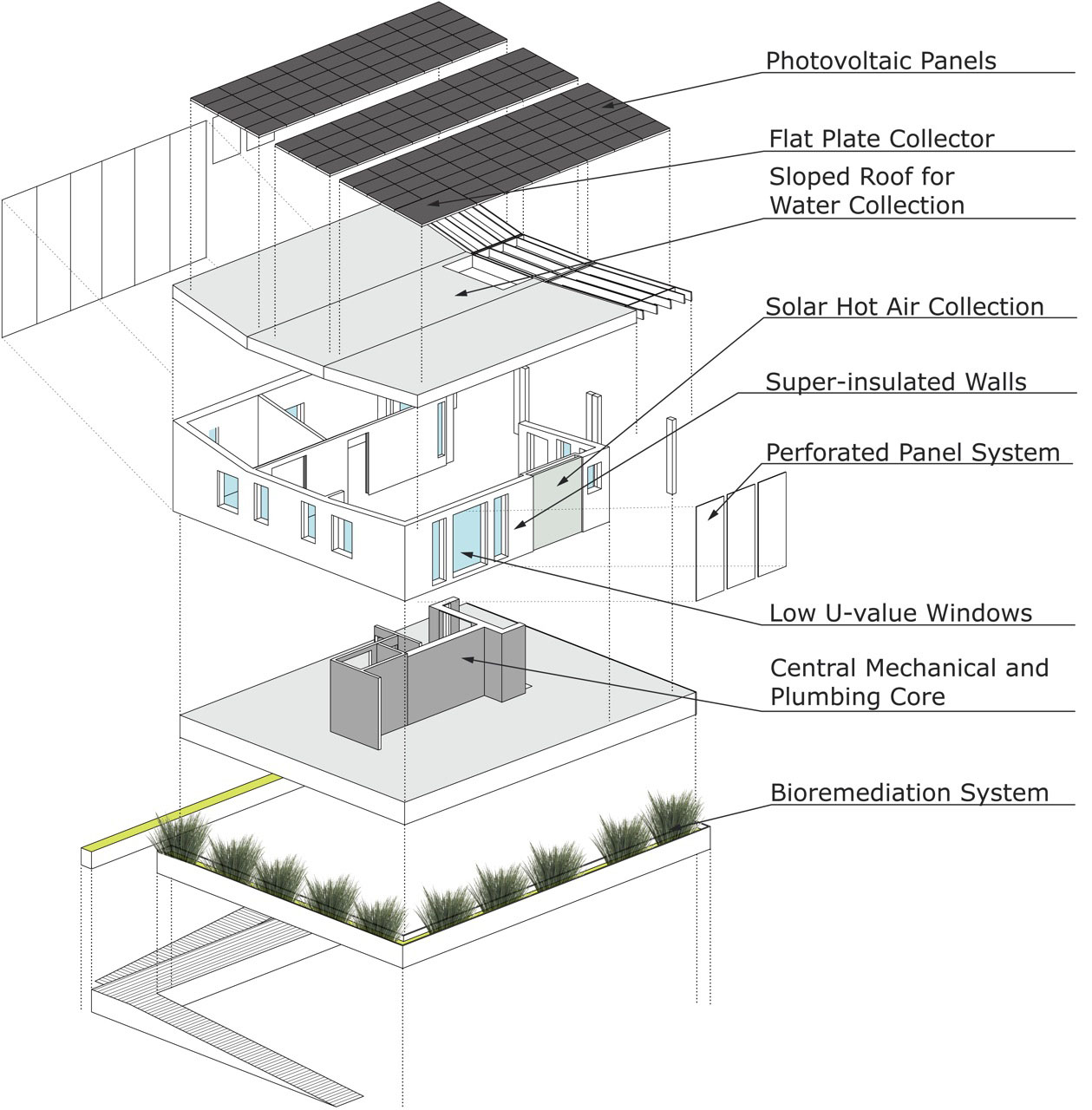
To maximize energy-efficiency, the house has been designed to meet Passive House Standards. Using thicker wall framing with advanced framing techniques, the airtight envelope will be super-insulated to reduce the heating and cooling loads. A desiccant dehumidifier is the main component of the solar hot air system, using phase change material (PCM) to extract and release heat from the air that moves between the spaces of the rain screen. Photovoltaic panels and a flat plate collector cover the roof to generate solar energy but are shielded from view by the tall polycarbonate panels that clad the home’s exterior. In addition, the roof is sloped to collect rainwater that runs to a small pool separating the front porch from the core.
Focused on research that shows that the average home size has grown more than two-fold in the last 60 years while the size of the family has decreased, the OSU Solar Decathlon team found efficiencies by layering the functions of the home around the core. An example is the kitchen, an integral part of the core, yet one that faces the large open living space. The layered design creates overlapping spaces that feel bigger, but it maintains specific functions for gathering, dining, and cooking in a smaller footprint. Because the core anchors the design, the concept home has been named enCORE. The name has a double meaning, says Faust, referring also to the repeat entry in the competition. “We want people to know we are back, but we also want them to know, ‘Look at the core when you walk into the house,’ because this is what makes the space around it work so well,” she explains.
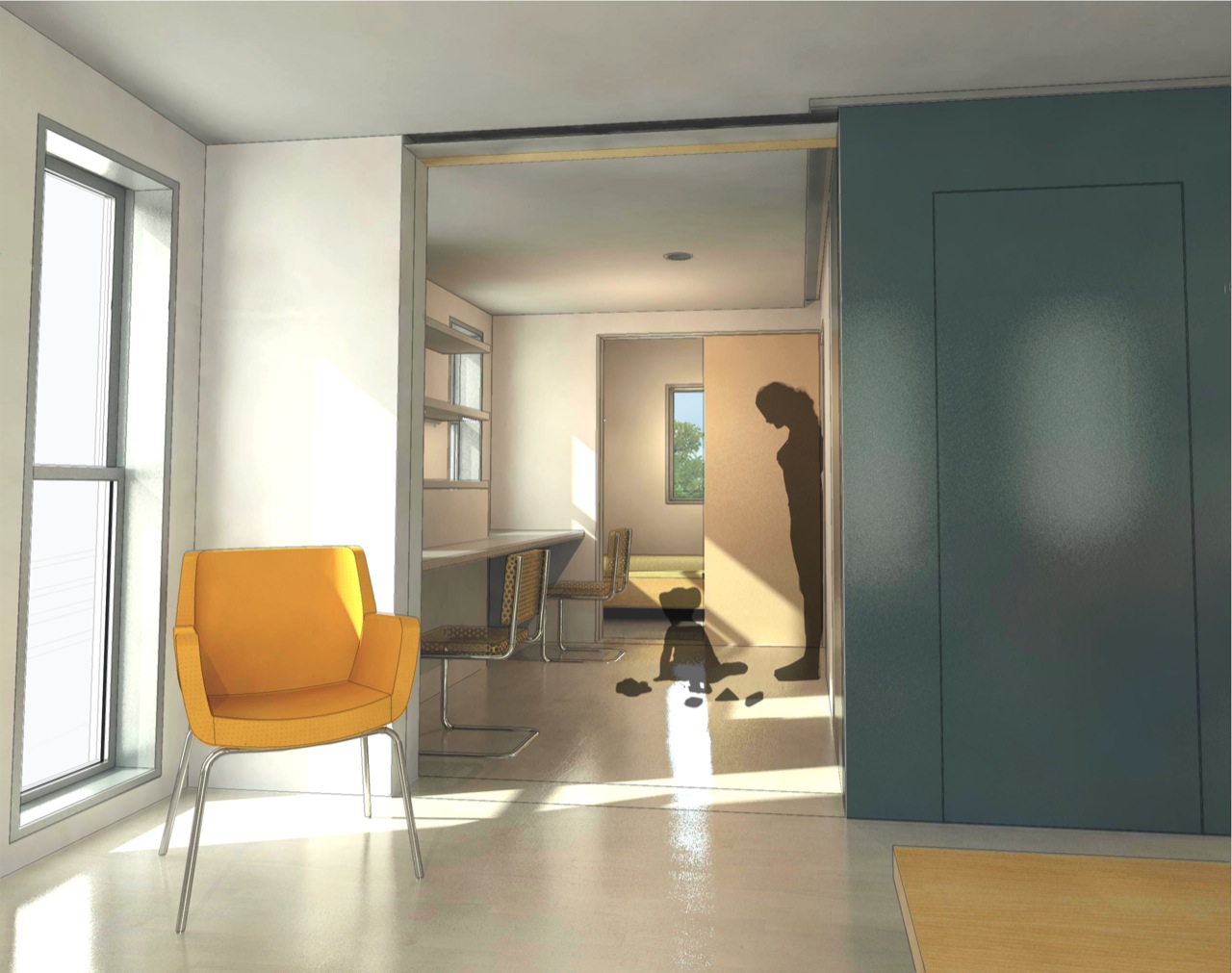
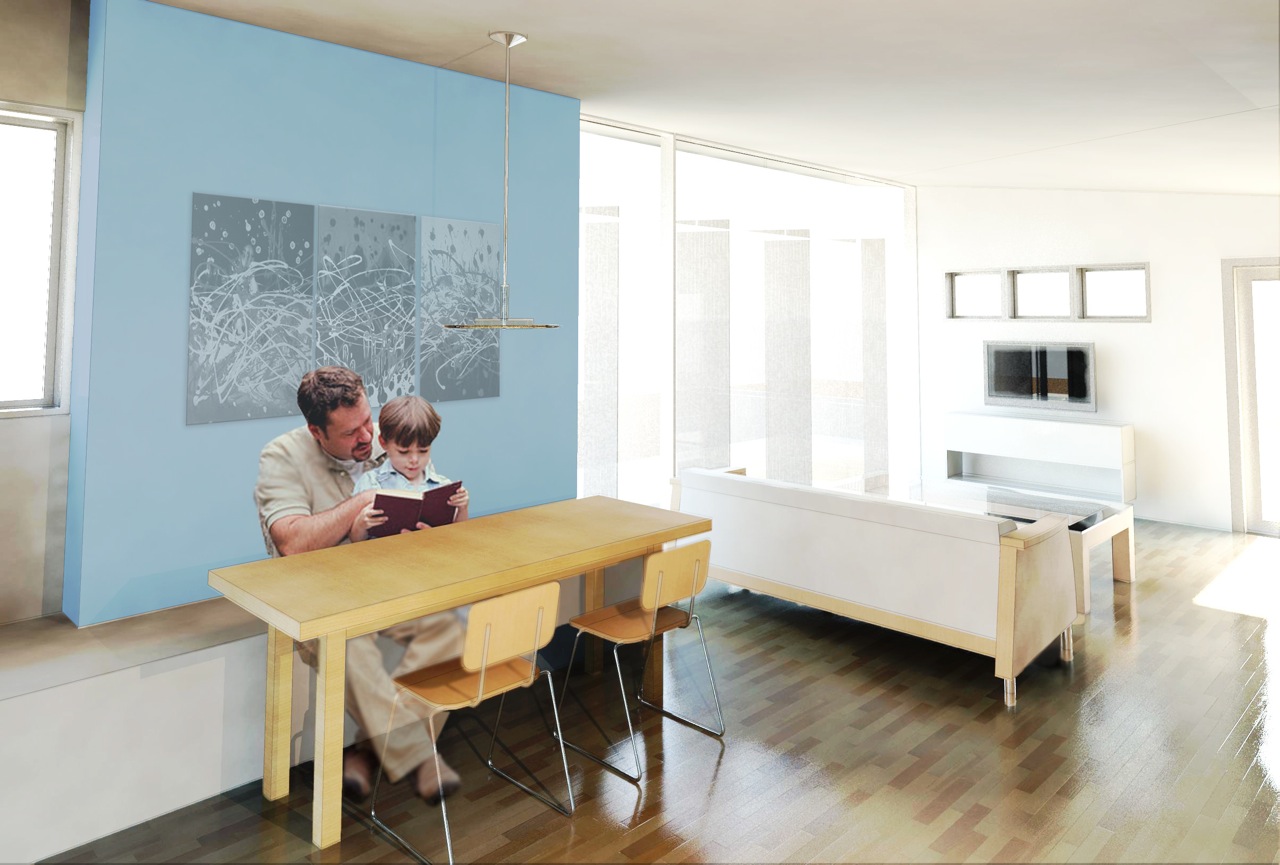
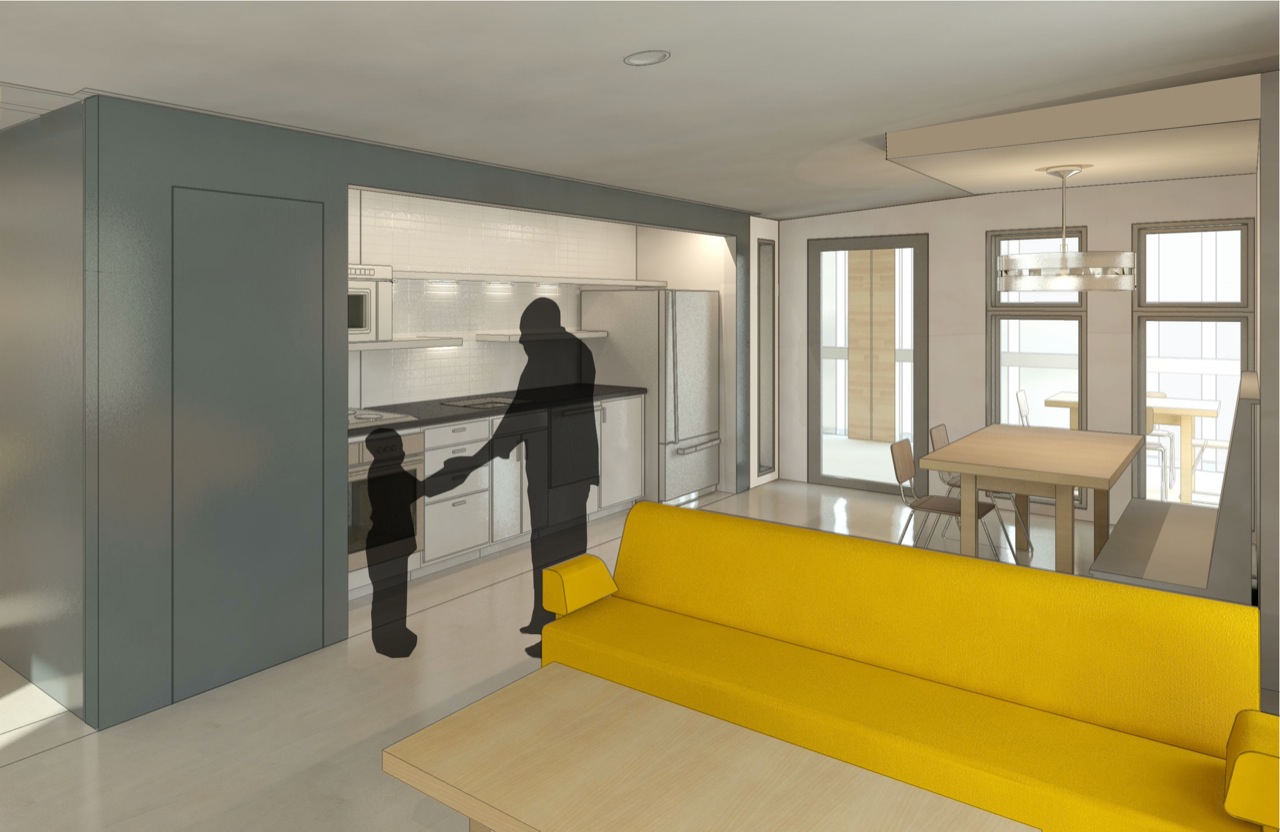

Ryan Carpico
Ryan is a Registered Architect who earned a Bachelor of Architecture from the University of Kentucky in 1998. His experience in a broad spectrum of architectural projects includes design and project management in multi-family residential, general commercial, and institutional projects. This architectural experience is balanced with a background in general contracting of residential and light commercial construction projects. Ryan’s knowledge and ability as both architect and builder enable him to address both the technical and practical sides of the comprehensive body of construction knowledge.
Website: carpicodesign.com/

